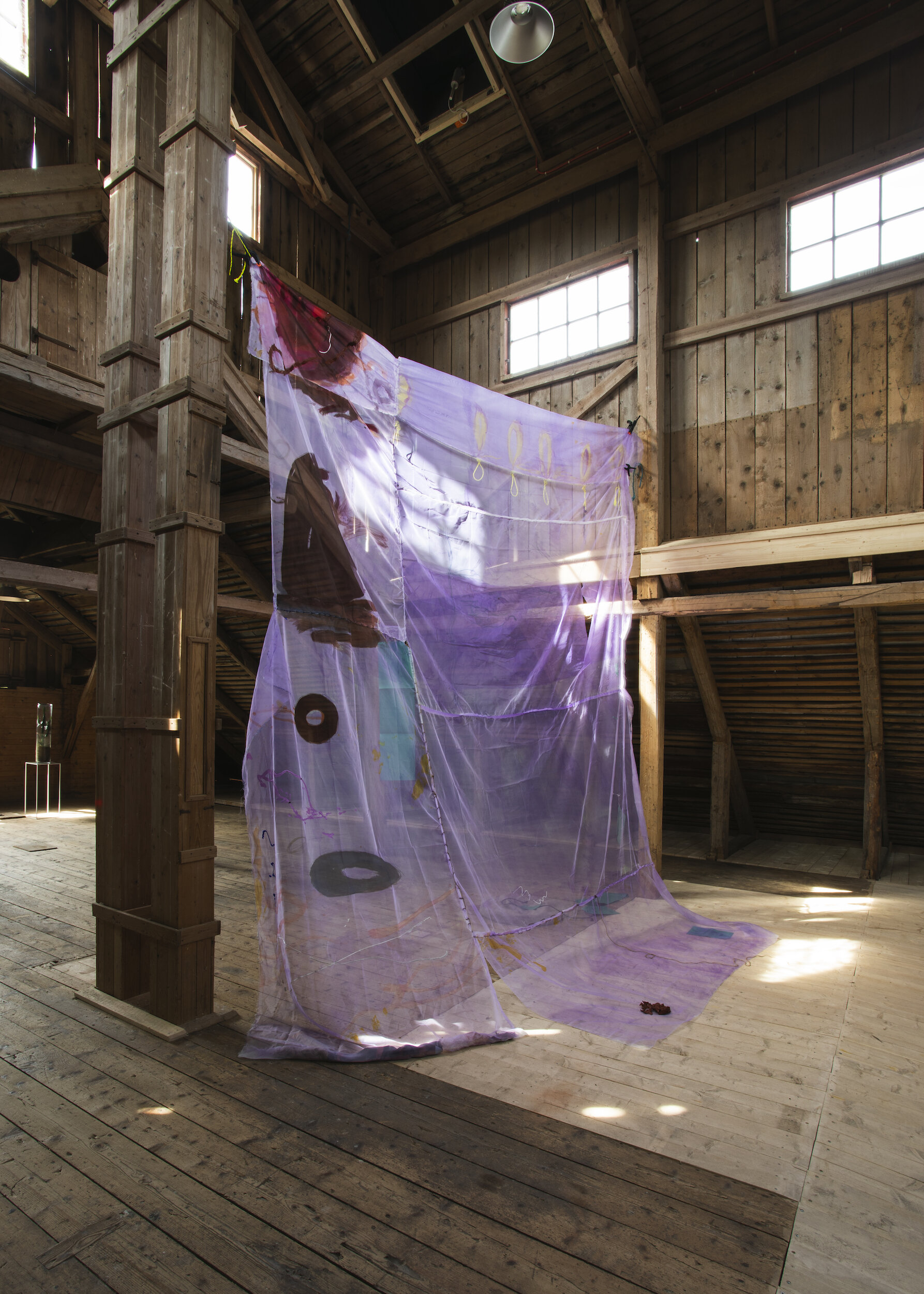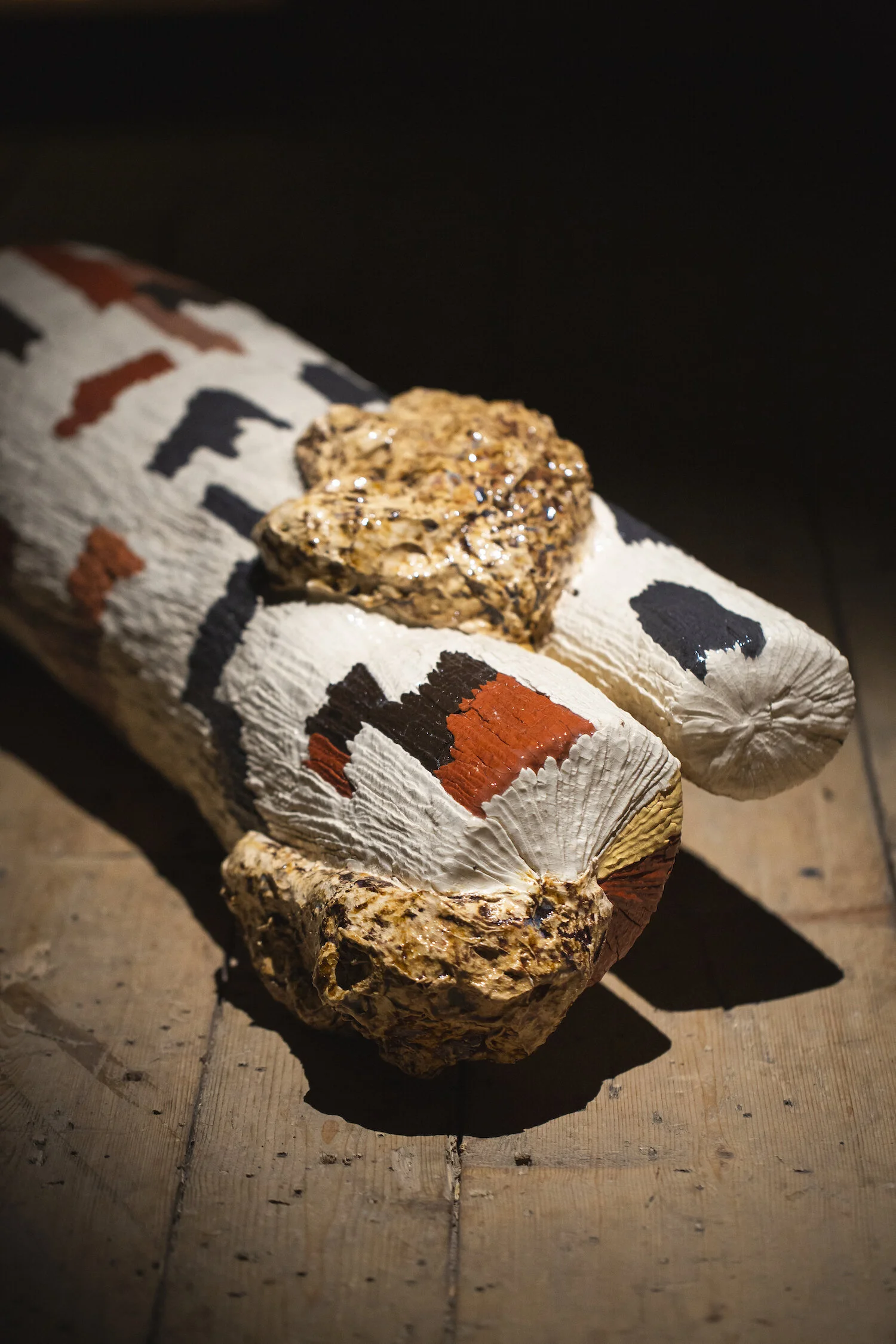kanssaelo / BEINGS WITh – Fiskars village art and design biennale 2019
Beings with – the wonder and trouble of togetherness
Artists: Lene Baadsvig Ørmen (NO), Leah Beeferman (US), Marjolijn Dijkman (BE), Ramina Habibollah (FI), Johannes Heldén (SE), Alma Heikkilä (FI), Dambi Kim (KR), Jaana Laakkonen (FI), Tuomas A. Laitinen (FI), Richard Ibghy & Marilou Lemmens (CA), Candice Lin (US), Elina Minn & Co. (FI), nabbteeri (FI), Laura Põld (EE), Aki Sasamoto (US/JP), Raimo Saarinen (FI), Tove Storch (DK), Louise Waite (SE).
Curator: Jenni Nurmenniemi / Assistant Curator: Riikka Thitz / Production: Luovi Productions
The contemporary art section of the first Fiskars Village Biennale, curated by Jenni Nurmenniemi, delves into the wonder and trouble of togetherness. From symbiotic to other kinds of interdependencies, questions of coexistence are placed in the forefront. The curatorial work has been guided by one of the ever-pertinent challenges of human existence: how to become better at living together and dealing with differences.
In the exhibition Beings with, the focus of this question shifts from a human-centric perspective to considering the ways in which humans, their planetmates, and different technologies are entangled in the process of co-creating this current version of life on earth. (1)
Life teems and takes new forms when beings rub against each other. Symbioses can be mutually beneficial or not, but they are happening everywhere. (2) A pioneering biologist, Lynn Margulis, known for her work on symbiogenesis and endosymbiotic theory, made a strong argument for interspecies cooperation being the true driving force of evolution, instead of competition. (3)
No matter how much our own species preoccupies us, life is a far wider system. Life is an incredibly complex interdependence of matter and energy among millions of species beyond and within our own skin. These Earth aliens are our relatives, our ancestors, and part of us. They cycle our matter and bring us water and food. Without “the other” we do not survive. (4)
What needs to be stressed, though, is that these interdependencies are not always harmonious affairs. The tricky art of living together is the key to the exhibition, and the artworks chosen or commissioned for the exhibition, from twenty artists, utilize a wide range of artistic methods and languages to explore the ways in which human lives evolved with and continue to be shaped by extra-human forces. They also tackle human attempts to make sense of and master each other and the rest of the planet-dwellers. The artists’ approaches vary wildly from abstraction to immersion to participatory situations.
Fiskars village, its environment, architecture, history, and social structure all contribute to how the exhibition unfurls. The artworks inhabit the Threshing House and Granary, buildings that were built along the Fiskars River for water power, as well as outdoor areas. In addition to the more fixed and stable works of art, there will be participatory sessions happening throughout the biennale’s duration, including tea ceremonies, eco-somatic exercises, and an incense-making workshop.
Whereas some artists turn to speculative approaches and science fiction in their world re-imagining and rebuilding, others adopt scientific methods and recent findings in their work. Both tactics carry the potential to speed up change when things seem to get too stagnant.
Despite the overall forward-thinking mentality, an important undercurrent in the exhibition is the re-reading of history, namely of the troubled sides of coexistence. Some artworks examine how the subjugation of countless beings has been central to the current state of the current political and economic world order – and the present manifestations of the mechanisms of othering.
While some artists involve particular plants in investigating the ways in which human lives and other materialities affect each other, others have built their whole practice upon working together with the plant world. This might not be an equal relationship, but it is not clear either which party ultimately profits from the other.
The exhibition invites the visitors to slow down, to focus their attention and attune to the signals, materials, and processes that shape the fabric of the everyday but easily go unnoticed amidst its hum and rumble. Instead of offering a mere visual spectacle, Beings with strives to feed diverse senses and imagination. The invited artists have cultivated practices that escape the accustomed logic of representation and instead try to make palpable the invisible threads that connect our lives to the cosmos.
All photos: Kerttu Penttilä / Luovi Productions
1) In many ways, the exhibition concept is inspired by the thinking of theoretical physicist and feminist theorist Karen Barad. See, for instance, Barad K. 2007. Meeting the Universe Halfway. Quantum Physics and the Entanglement of Matter and Meaning. Durham & London, Duke University Press.
2) Symbiosis refers to interaction between two different organisms living in close physical association, typically to the advantage of both. The term originates from the Greek word sumbiōsis "a living together" (en.oxforddictionaries.com/definition/symbiosis, 01/03/2019).
3) Margulis, L. 1998. Symbiotic Planet. A New Look at Evolution. New York. Basic Books. 33–49.
4) Margulis, L. 1998. Symbiotic Planet. A New Look at Evolution. New York. Basic Books. 111.



























